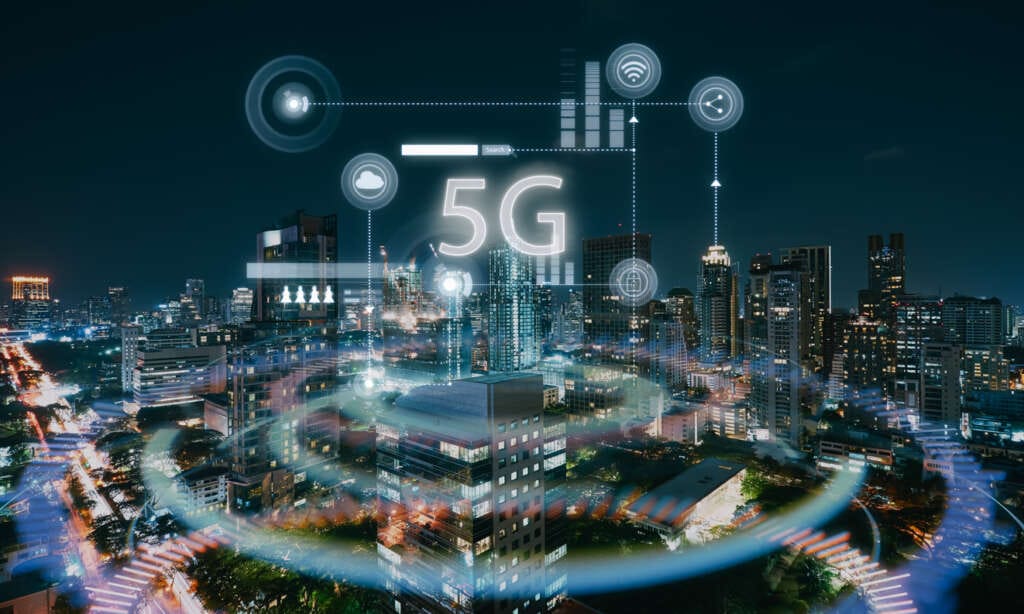
Blockchain and AI for 5G-enabled IoT: Challenges and Opportunities

Evgen Verzun, technology inventor; Founder of Kaizen.Finance
The communication network plays a key role in today’s digital environment. The use of IoT devices is growing rapidly around the world, and 5G technology is completely transforming the implementation of IoT in our lives.
The integration of AI into 5G wireless networks addresses various difficulties, including autonomous robotics, self-driving cars, virtual reality, and security concerns. IoT systems now require centralized servers, and a decentralized design might provide a solution to the problems they confront.
Blockchain has huge potential in various industries and environments, including IoT, and the main challenges in integrating blockchain and IoT are scalability. Blockchain allows a secure, decentralised, and trustless environment for IoT devices. IoT and blockchain integration, however, also presents certain difficulties. Let’s explore these challenges and most importantly, several solutions on how to deal with them.
Blockchain for AI-Enabled 5G Use Cases
The blockchain technology refers to the systematic connections of blocks using cryptographic hashes, which ensures security, consistency, and transparency. The 5G network operating model is entirely altered by this technology, which in turn creates a mobile telecommunications environment that is fundamentally novel.The speed of 5G is 20 times faster than the previous generation, and the revolutionary possibilities of this technology are used to develop new business models and programs with seamless communication between parties.
And secure decentralized blockchain has become an empowering technology that finds its way into various vertical industries. Its capabilities within 5G technology are overly broad and varied.
5G framework for commercialization
Users can now create telecommunication towers in networks, which become part of the overall structure of the provider. Blockchain and smart contracts provide a streamlined approach to registering towers, processing used services and automated fees, as well as payments in crypto tokens. These technologies provide reliability, transparency, and traceability.
5G networks distribution
Within wireless networks, bandwidth is low and very expensive, and operators pay very high fees. They purchase sub-bands for the purpose of self-use or leasing to other providers. And within 5G infrastructure the giant telecom operators should allow new small operators to provide a 5G network without exorbitant commissions.
Networks roaming
This is one of the key issues in the telecommunications environment, due to the fact that all parties must agree on the terms of payments and commissions. Smart contracts contain all the terms of the agreement, as well as enable verifying and complete control of the communication process so that everything can be tracked and verified.
Regulatory and compliance
5G networks will process embedded IoT devices by trusted centralized intermediary providers. And blockchain storage capabilities are more optimal and efficient than those centralized providers. Control can be exercised in a decentralized and transparent manner, with regulatory compliance and automatic payments.
The Role of AI In The Future of 5G
AI breakthroughs may assist increase 5G system speed and efficiency, while the proliferation of 5G connected devices can promote dispersed intelligence with further advances in AI learning and inference. The connected intelligent edge transformation has started, and it is critical to realize the full potential of the 5G future.
On-device AI may benefit the overall 5G system in addition to being used in the core and radio access networks to provide intelligent network operation— higher QoS, greater efficiency, easier deployment, and improved security. Radio awareness is the fundamental enabling capability that delivers usable knowledge via ambient and contextual sensing, potentially reducing overheads and latency. The 5G system may provide enhanced device experiences such as more intelligent power management, improved system performance such as greater spectrum utilization, and increased radio security such as better protection against malicious attacks through radio awareness.
IoT systems will be able to enable continuous development through self-learning with the assistance of AI, where both — the network and the device — can adapt to their surroundings dynamically and optimize operations depending on what they encounter. This is a fundamental shift in the way wireless networks may be improved, and we anticipate that this AI-native design process will be included into the future 6G system.
5G Network Slicing And the Way It Impacts IoT
5G slicing was created for IoT use cases, with each slice being an isolated end-to-end network tailored to the unique needs of an IoT application.On top of a shared network infrastructure, each company may build many virtual networks, each with capabilities and functionality tailored to a certain service or client group. Network slicing makes it easier to implement use cases that emphasize security and speed. Many of the use cases will be based on innovative IoT business models. A hospital, for example, may need a slice to segregate data exchange from a healthcare monitoring system. This would lower the danger of data breach and control channel intrusion, mandating the deployment of a slice with single-user virtual resources.
Challenges in IOT-Blockchain Integration
Blockchain enables sensitive data transmission between payments and devices within the Internet of Things. Integrating blockchain with IoT comes with some challenges, as the technology was originally developed for digital currencies. Let’s look at the key issues in IoT-blockchain integration.
Storage and throughput scalability. The average throughput of Bitcoin is 2.5 to 3.5 TPS, while Ethereum is about 12 to 15 TPS. The number of installed IoT devices is in the tens of billions, which means that blockchain-based IoT systems require a much higher carrying capacity. In terms of storage scalability, blockchain technology is not designed to store big data, and IoT systems generate gigabytes of data per second.
Confidentiality and anonymity. When transmitting data on a public blockchain network, IoT devices frequently require increased confidentiality and security. The issue of safety and security has been known for a long time, and using traditional crypto algorithms to maintain anonymity and privacy in the case of IoT network is more difficult.
Consensus. IoT systems have limited resources, so some standard consensus algorithms are not suitable for them. For example, a PoW-based blockchain requires high computing power. The main problem of such IoT models is the issue of mining. Off-chain can become the solution, but in this case, the data must go outside the blockchain in order to reduce the delay. Another problem is the high level of energy consumption in the PoW blockchain.
Network scalability. Several consensus algorithms have been implemented to achieve increased blockchain throughput, but their network has become a limiting hurdle. The added blockchain block must be verified by the maximum number of network nodes, but this is extremely time-consuming. To boost network scalability, all nodes must propagate blocks quickly, which is actually impossible to achieve within a public network.
What Can Help Integrate IoT with Blockchain
A decentralized and distributed cloud storage network should be used to integrate IoT and blockchain. Instead of keeping data on the blockchain, the system should divide the data into shares and distribute them to several cloud network storage peers. The blockchain only stores the event and hash of these data produced by IoT devices.
Distributed database network
It is not possible to store gigabytes of data generated by IoT systems every second. The only solution is cloud storage and a distributed database. A working distributed database network should function like data storage, data retrieval and data maintenance.
- Data storage: the received data is divided into several parts, and this process means data segmentation;
- Data retrieval: by referring to the metadata, the user can easily locate the previously stored parts, and the original data can be retrieved;
- Data maintenance: data retrieval is possible even if several nodes are down or several parts are damaged; the original data can be recovered using a minimum number of fragments.
The integration of the newest technologies like AI, and blockchain enable IoT to play an essential role in the future infrastructure. There are numerous opportunities and industrial uses of 5G enabled IoT devices, such as supply chain, e-voting, industry 5.0, and smart home. Although we are on a road to enabling these convergence in the future, businesses need to start building digital transformation strategies, taking into consideration the transformative power of these technologies.


